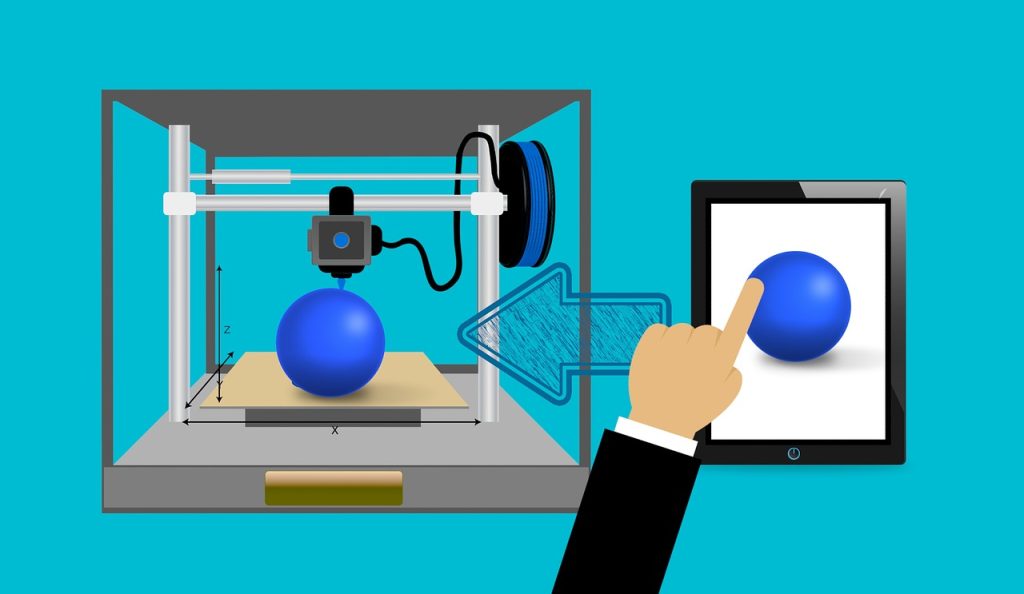The introduction of 3D printing is revolutionizing the world of advanced manufacturing. This powerful technology has enabled manufacturers to create parts and products that were once deemed impossible, providing new opportunities for creativity, efficiency, and innovation. With 3D printing, exclusive designs can now be printed in a single step without the need for complex assembly or additional parts; this streamlined process cuts down on costs and reduces material waste.
In this article, we’ll take a closer look at how 3D printing is changing the face of manufacturing and explore all its exciting potential applications in further detail.

What is 3D printing?
It is a revolutionary technology that has opened up new opportunities for the manufacturing industry. An emerging additive manufacturing process creates three-dimensional objects from digital models by successively layering materials. 3D printing has influenced all aspects of life, from medicine and engineering to architecture. Home enthusiasts can now produce customized items without relying on large production runs.
By coupling the power of computers with practical machines and specialized software, users have more control over manufacturing their ideas than ever before. This impressive technology is predicted to become increasingly widespread over the years as its applications expand, and costs decrease further.
Also Read: What are 3D Models Used For?
How does 3D printing improve manufacturing?
It has significant advantages over traditional manufacturing processes in terms of cost, speed, and flexibility. 3D printing is faster than traditional methods and requires less labor, making it the ideal choice for small-batch production runs. It also eliminates the need to create multiple components from individual parts. With this technology, complex products can be produced at a fraction of the price and time required using conventional methods.
Furthermore, 3D printing allows for more intricate designs that are impossible or difficult to produce with traditional manufacturing processes. Parts can be printed with an array of materials such as plastic, metal, or composites, enabling manufacturers to customize products to their exact requirements without sacrificing quality or precision.
Finally, 3D printing can be used to produce products that are lighter and more durable than their traditional counterparts. It also reduces material waste since the exact amount of material needed for a particular design can be precisely determined. It leads to fewer moments in production processes, resulting in better overall efficiency.
What is a rapid prototyping service?
3D printing has become one of the most critical tools for rapid prototyping services. It allows manufacturers to quickly create working prototypes and test their products without investing in costly production processes. It also eliminates many risks associated with traditional manufacturing, such as design flaws or improvisation errors that can cause delays and cost overruns.
Manufacturers can use 3D printing to quickly test their ideas and iterate to get the desired results. Prototyping services can also quickly create functional models of products before manufacturing them on a larger scale. It will enable manufacturers to adjust and tailor designs according to customer feedback or other considerations before mass production begins.
How does rapid prototyping service help manufacturers?
Rapid prototyping services are beneficial for manufacturers who are working on new product designs or customizing existing products. They can quickly design and test a prototype, which can be revised before moving into mass production. It offers significant savings in terms of time, money, and resources since manufacturers can immediately make changes after they have committed to a full-scale production run.
In addition, rapid prototyping services are helpful for product troubleshooting or failure analysis. If a problem occurs in the production process, 3D printed parts can be quickly compared with the original design to identify and solve any potential issues before they become costly mistakes.
What’s the future of 3D printing in manufacturing?
The future of 3D printing in manufacturing looks very promising. As technology continues to evolve, it’s becoming increasingly accessible and cost-effective for manufacturers of all sizes. It also offers manufacturers greater flexibility when producing a wide range of products.
In the long term, 3D printing could completely revolutionize how many industries produce their products. Manufacturers are already using it to create complex parts and components and fully functional prototypes in a fraction of the time and cost required with traditional methods.
The potential applications for 3D printing are immense, and this revolutionary technology will continue to grow in importance in the manufacturing industry. Already, many large manufacturers are beginning to embrace 3D printing and its potential in their production processes. As the technology continues to develop, even more companies will likely take advantage of this innovative and cost-effective tool for streamlining their manufacturing operations.
Also Read: How Tech Is Changing Outbound Marketing?
Conclusion
3D printing has quickly become an integral part of the manufacturing industry. It offers numerous advantages such as speed, cost savings, customization, and flexibility that traditional manufacturing processes cannot match. Manufacturers can quickly create working models for testing and feedback by utilizing rapid prototyping services before committing to a full-scale production run.
The future of 3D printing looks promising, with many large companies already beginning to embrace its potential in their operations. As technology continues to develop and evolve, even more manufacturers will likely take advantage of this revolutionary tool for streamlining their processes.
